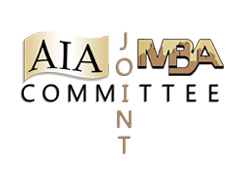

Bonds, Insurance, & Liability
Section F-5
Warranties*
The Joint Committee recommends a clear understanding of the establishment and documentation of warranties so that applicable parties can minimize issues with defective material and/or workmanship incorporated into a project. The Owner needs to understand that notification is critical in the warranty process. Notification delays interfere with and impede the resolution of warranty issues.
It is recognized that varying and indefinite requirements pertaining to warranties exist in the construction industry. It should be clearly known for each type of warranty when it commences, which is typically when the Certificate of Substantial Completion is issued unless otherwise agreed to. Furthermore, the contract documents should state which party is responsible for providing the warranty and its term length.
Standard warranties by the supplier and/or manufacturer for equipment and material used in the project are for various lengths of time, depending upon the quality and manufacturer. Where there is a choice, the selection should be made a part of the specifications. Where none are listed, the longest time should be used as if written and specified. Where possible, supplier contracts should be negotiated to effect the start of warranty coincident with the Contractor's warranty. Manufacturer warranties for required items should be delivered to the Owner at the commencement of the warranty period.
In the event that the Owner or Owner's agent utilizes a system prior to completion, then it is recommended that a Certificate of Substantial Completion be issued on that portion of the work so that all relevant warranties become effective and that the building systems or equipment is turned over to the Owner for operation so that warranty periods for that system or equipment may typically begin at date of transfer of ownership from Contractor to Owner.
If at the time of full occupancy of the building, there are systems or equipment not yet complete, the warranty period for those systems or equipment should begin only after they have been completed by the Contractor.
The Contractor should submit a written Certificate of Substantial Completion, listing said system and equipment to the Design Professional for signature of the Owner for record keeping. If the Contractor wants to use permanent systems or equipment during construction, the Owner should provide written permission to stipulate the conditions of acceptances for such use and also establish the beginning of the warranty period.
The warranty requirements should be objective and determinable.
* The term "warranty" replaces the term "guarantee" throughout A-201. There is currently no legal or common usage determination between the terms, and "warranty", with the added impetus of recent Federal legislation, is becoming the universally used term.
REFERENCES:
ConsensusDOCS 200: Owner/General Contractor Agreement and General Conditions
AIA Document A201 'General Conditions
Temporary Facilities and Controls Construction Guidelines
TAGS: Certificate of Substantial Completion.
Glossary Terms for the Best Practices Guide
History of Recommendation:
Revised July, 2010
Revised October, 1998
Revised May, 1987
Approved December, 1976
Back to Bonds, Insurance, & Liability
About Us | Best Practices Guides | Glossary | Hot Topics | Contact | Home
© 2023 AIA MBA Joint Committee